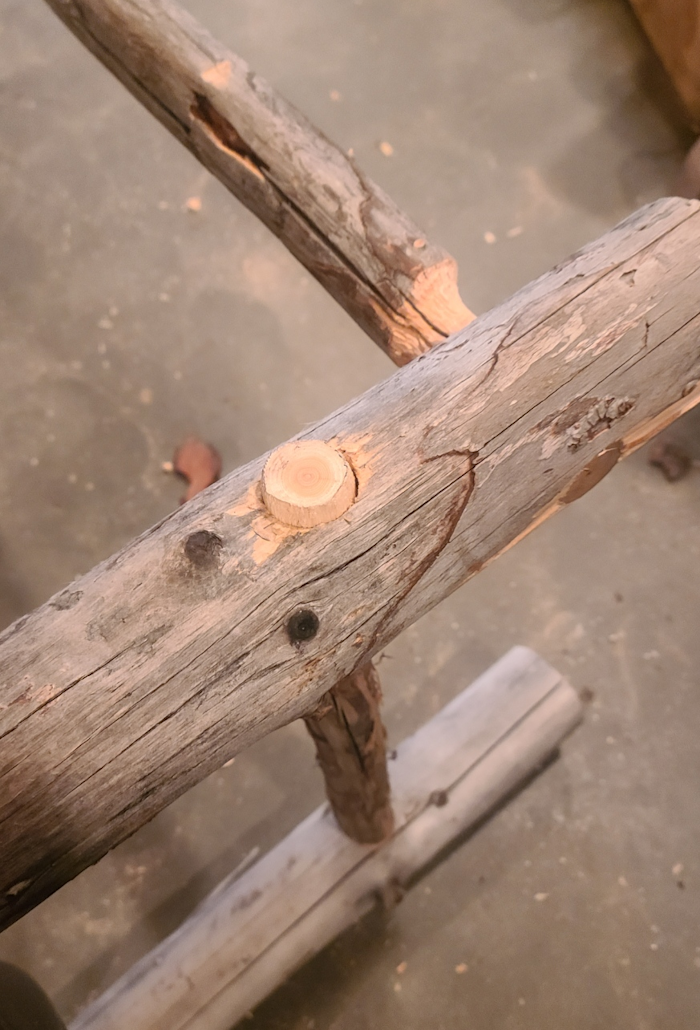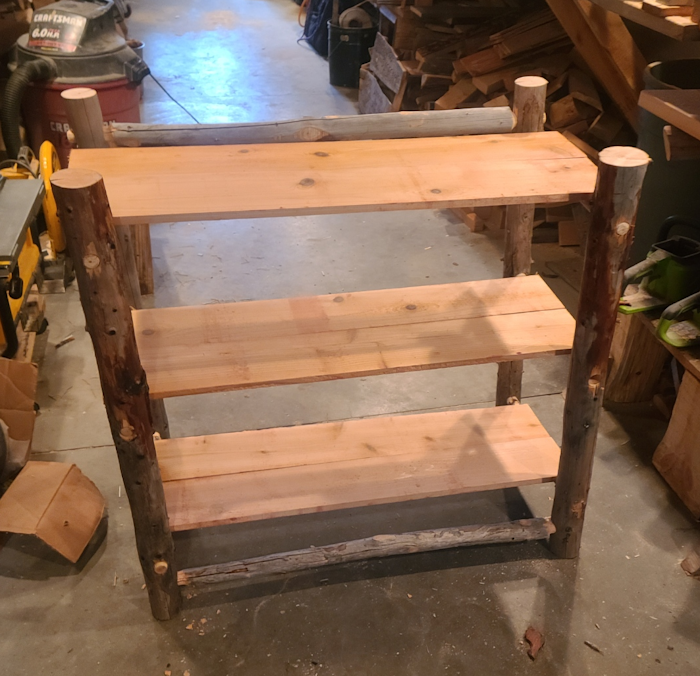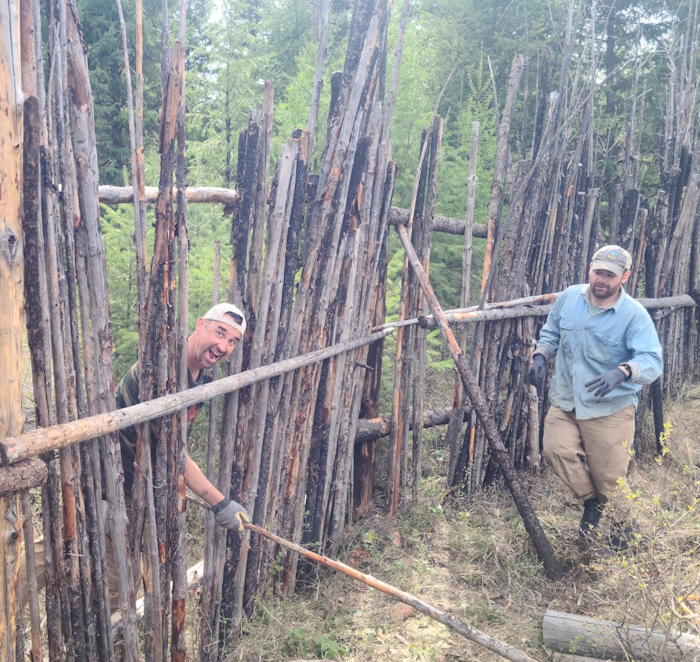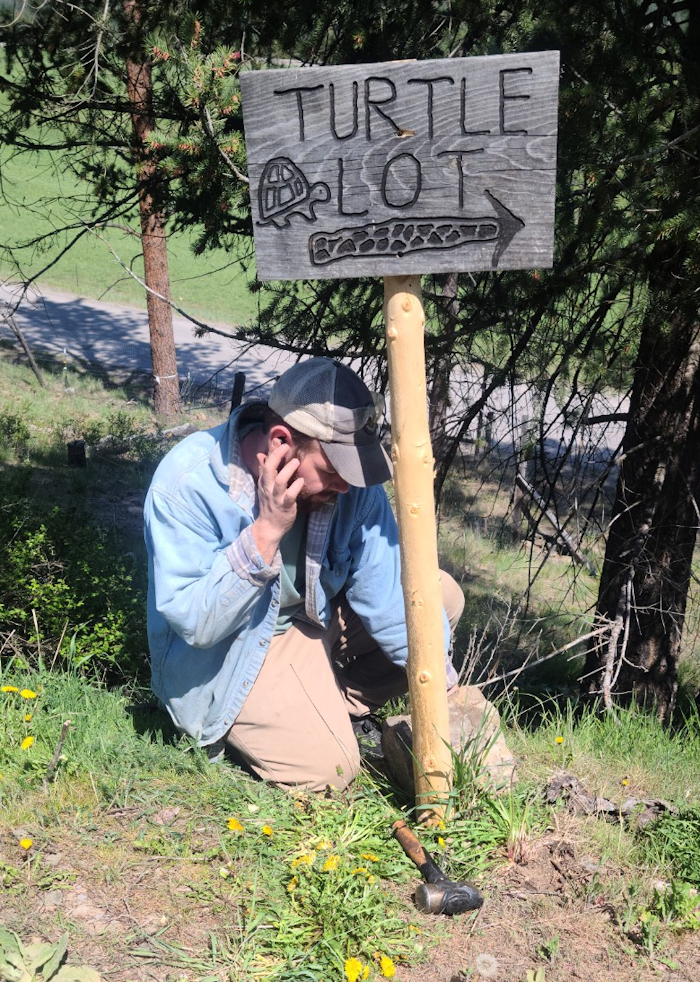BEL #769
I completed Bookshelf #2 today: roundwood scraps and cedar planks, and with no metal fasteners. I'm definitely pleased with how things turned out.
This mortise snapped as I was hammering the peg into place with a rubber mallet. It was a setback, though not a frustrating one. On the one hand I'm using junk pole scraps. On the other hand, I'm using junk pole scraps. The good news is that these are relatively easy to replace, though more fragile than a quality piece of wood. So I cut out another 3-foot section (this one with a slightly-larger diameter), drilled-out the mortises as best I could, and tried again.

I made sure to chamfer the ends of the tenons with a rasp (shaving down the exact "corners" so they'd have a more-forgiving connection point), and thinned each of the tenons overall so they would have a little wiggle room.
The final fitting was challenging, and took patience. The shelf support pegs were pointing in all sorts of odd directions. I worked on one half first, supporting the other side of the shelf on a stool. After slightly-hammering in the tenons for one side of the shelf with a mallet, I slid the other three pegs in place and hammered them in just enough so they would stay.
I worked from one corner to the opposite, similar to when you're tightening lug nuts onto a tire rim of an automobile. Gradually I had the four corners nice and snug, with a little bit of tenon sticking out the other side of the mortised support leg. Though I thought it was wobbly and fragile before, now the entire frame felt as tight (and perhaps full of tension) as a bowstring.

I'm taking this up to the tent this evening. It'll be a nice (and useful) addition, for sure.
 Things to research for Bookshelf #3:
Things to research for Bookshelf #3:
- how to calculate and scribe proper right angles
- how to place and drill holes in-line with the end of roundwood pegs.
Always remember:
- Drill mortises all the way through the posts, and don't bother using dowel rods as your tenons. Just use the support peg itself as the tenon, trimming the ends down with the tenon-maker (again:
thanks, Amy!)
- Work the tenon-maker slowly, and don't go full-power with the drill. It's easy to make "crooked" tenons if you're not careful. It pulls forward on its own.
- Measure the mortise-drill-marks for the shelf supports and frame supports from exclusively one end or the other. For this
project, I measured all distances from the bottom/"foot" of the shelf legs, so all measurements were consistent.
- Roundwood pieces are curved, even slightly, and so may not have an exact connection. Stretching, pushing, and pulling the frame can help, but be gentle with the hammer.
- If you need to extract a tenon from a mortise, hit it with a short section of dowel from the opposite side. Do not use the "shinto" rasp for this, even if it's just so darn convenient, because you will likely damage the tool.
- Use a rasp to reduce the tenons just slightly-smaller than their original diameter, to aid in creating a secure, snug fit.

 11
11










 8
8






 6
6




 12
12







 1
1













